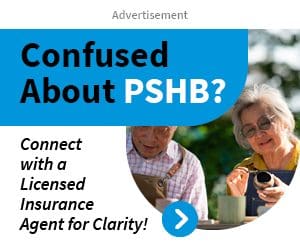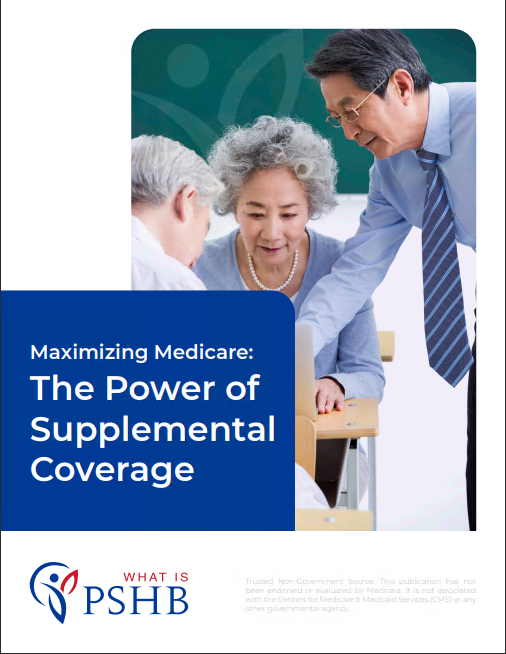Key Takeaways
-
The Postal Service Health Benefits (PSHB) Program fully replaced the Federal Employees Health Benefits (FEHB) Program for USPS employees and retirees starting in 2025.
-
Understanding the PSHB structure, enrollment rules, and Medicare integration is essential to protect your healthcare coverage and avoid lapses or unexpected costs.
Why FEHB Is No Longer Available for USPS Workers and Retirees
As of January 1, 2025, the PSHB Program has officially replaced the FEHB Program for United States Postal Service (USPS) employees, annuitants, and eligible family members. This change stems from a provision in the Postal Service Reform Act of 2022, which created a separate health benefits program for USPS participants to reduce long-term financial liabilities and align benefits with Medicare.
You are no longer eligible for FEHB plans if you are a USPS employee or retiree. Your healthcare coverage now comes exclusively through the PSHB Program, administered by the U.S. Office of Personnel Management (OPM).
Who the PSHB Program Applies To
The PSHB Program applies to:
-
All active USPS employees
-
All USPS annuitants (retirees receiving a USPS annuity)
-
Eligible family members of both employees and annuitants
It does not apply to federal employees who are not part of the USPS workforce.
Key Differences Between FEHB and PSHB
Although PSHB and FEHB share some similarities, there are several important differences to understand:
1. Mandatory Medicare Part B Enrollment
One of the most significant changes is that if you’re a Medicare-eligible USPS annuitant or family member, you are now required to enroll in Medicare Part B to maintain full PSHB coverage. Exceptions include:
-
You retired on or before January 1, 2025, and are not already enrolled in Medicare Part B
-
You are an active USPS employee aged 64 or older as of January 1, 2025
-
You live outside the U.S.
-
You receive care through the Indian Health Service or the Department of Veterans Affairs
Failure to enroll in Medicare Part B without qualifying for an exception could result in reduced coverage or loss of eligibility for certain benefits.
2. Automatic Enrollment During Open Season
If you were enrolled in an FEHB plan as a USPS employee or retiree in 2024, you were automatically enrolled in a comparable PSHB plan during the 2024 Open Season, which ran from November to December.
You had the opportunity during that time to:
-
Review your new plan details
-
Choose a different PSHB plan
-
Opt out entirely (not recommended unless you have other qualifying coverage)
3. Medicare Part D Integration
PSHB plans for Medicare-eligible enrollees now include prescription drug coverage integrated with Medicare Part D. This change eliminates the need to purchase separate Part D coverage and adds advantages such as:
-
A $2,000 annual out-of-pocket cap for prescription drugs
-
A $35 monthly cap on insulin
-
Access to a broad pharmacy network
4. New Enrollment Processes
Active USPS employees now make health plan elections through LiteBlue, while annuitants manage their PSHB options through KeepingPosted.org. This shift also includes:
-
Dedicated support lines and online portals
-
Updated benefit comparison tools
-
New timelines for qualifying life events (QLEs)
Important Deadlines and Enrollment Periods
You should be aware of the following key enrollment periods that took place or apply going forward:
-
Special Enrollment Period (SEP): April 1 to September 30, 2024 — for enrolling in Medicare Part B without penalty.
-
Open Season: November to December annually — to review and change your PSHB plan.
-
Qualifying Life Events (QLE): Specific personal events like marriage, birth, or retirement allow changes outside Open Season.
Once you’ve retired or experienced a QLE, you typically have a 60-day window to make changes.
Costs and Coverage Structure in the PSHB Program
While PSHB premiums and cost-sharing structures are similar to what you had under FEHB, there are some updates worth noting:
-
Government Contributions: The federal government continues to cover roughly 70% of your premium.
-
Copayments and Coinsurance: These now range based on plan type, with typical primary care visits between $20–$40, and emergency care between $100–$150.
-
Deductibles: Vary by plan but typically range from $350–$500 for in-network care in low-deductible plans.
-
Out-of-Pocket Maximums: In 2025, these are set at $7,500 for Self Only and $15,000 for Self Plus One or Self and Family.
Medicare-eligible enrollees may benefit from reduced deductibles, waived copayments, and enhanced pharmacy benefits depending on the selected plan.
What You Need to Do Now
If you’re currently working at USPS or have already retired, here’s what you should focus on in 2025:
Review Your Plan Coverage
-
Visit the OPM PSHB page to explore your current plan’s brochure.
-
Confirm your provider network, cost-sharing details, and drug coverage.
Enroll in Medicare Part B if Required
If you’re newly eligible for Medicare in 2025 or haven’t yet enrolled in Part B, check if you fall under the mandatory enrollment requirement. Sign up as soon as you’re eligible to avoid late penalties and coverage gaps.
Understand Your Drug Coverage
-
Check your plan’s formulary (list of covered drugs)
-
Use available tools to compare costs and pharmacy networks
Prepare for Open Season
Even if you’re satisfied with your current coverage, it’s still important to:
-
Compare other plan options each year
-
Confirm that your plan still meets your health needs
-
Look out for your Annual Notice of Change
What Happens If You Opt Out or Miss Medicare Part B Enrollment?
Skipping Medicare Part B enrollment (when required) may lead to:
-
Loss of access to certain PSHB benefits
-
Higher out-of-pocket costs
-
Late enrollment penalties that increase your Part B premium permanently
If you opt out of PSHB coverage entirely, you may not be able to reenroll until the next Open Season or a qualifying event.
PSHB and Other Federal Benefits
The implementation of the PSHB Program does not affect your eligibility for other federal benefit programs, including:
-
FEDVIP: Dental and vision benefits remain available to USPS retirees and employees.
-
FEGLI: Your life insurance benefits are unchanged.
-
FSAFEDS: Flexible Spending Accounts are still offered to eligible employees.
-
FLTCIP: Long Term Care Insurance is still in place for existing enrollees, though new enrollment is suspended.
Staying Informed and Getting Support
To make the most of your health benefits under the PSHB Program, make sure you stay up to date:
-
Watch for communications from OPM and USPS
-
Visit KeepingPosted.org (for annuitants) or LiteBlue (for employees)
-
Use the PSHB Navigator Help Line at 1-833-712-7742 for assistance
You can also speak to a licensed agent listed on this website for expert guidance.
Making the Most of the PSHB Program for USPS Retirees and Employees
While the transition from FEHB to PSHB may feel overwhelming, the new program provides streamlined integration with Medicare, stronger prescription drug protections, and dedicated systems for USPS employees and retirees. The most important step you can take now is staying proactive—review your plan each year, verify Medicare enrollment requirements, and seek help when needed.
If you want a clearer understanding of how PSHB impacts your specific retirement or employment situation, reach out to a licensed agent listed on this website for professional advice tailored to your needs.






